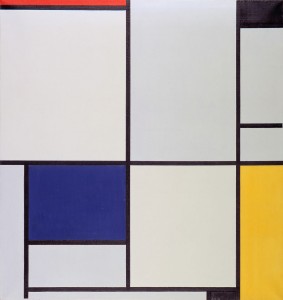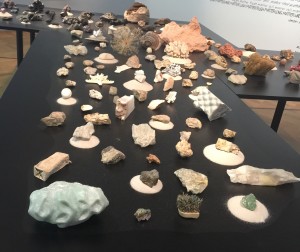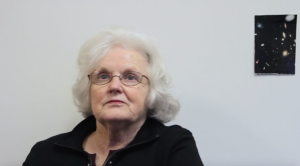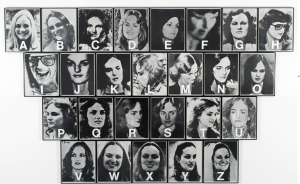Con: together with
Tempus: time

Three years ago when I was a freshman taking my first history course, Professor Melissa Macauley talked about one moment she recalled from 1989, China, when she was a visiting student at Beijing:
“I went past the [Tian’anmen] Square, and saw people gathering. At that point I did not know what it meant. I was thinking about my scholarship, about when I would receive it, and I walked past it.”
At the moment, Professor Macauley was witnessing one of the key moments in Chinese history. However, she confessed that she did not pay attention to it (and sadly so, because “How could I- I was a graduate student then with a degree in history!”).
Factual Contemporaneity and Radical Contemporaneity
In Professor Macauley’s narrative, I saw a duality of “contemporaneity” because of two different interpretations of the idea “time.”
On the one hand, there is the objective timeline everyone agrees upon and acknowledges to be the backdrop of all happenings. Only with such backdrop is any human experience possible: That there could be order, and things do not cluster together in chaos.
In this sense, the event was contemporary to Professor Macauley because in the objective timeline, she stood at the same point as the event. I will call this “passive contemporaneity,” or “factual contemporaneity.”
On the other hand, there is the time that involves human understanding. We humans naturally seek connections in order to make sense of the world: We think that earlier events cause later ones, which in turn cause even later ones. We think that things that exist at the same time interact with one another.
In this sense, Professor Macauley did not think of the event as contemporary of her. That is, she neither realized her relationship with the event, nor saw what led to it, or what it might lead to. I will call the realization of the connections between the perceived event or artwork and the audience or other events “active contemporaneity,” or “radical contemporaneity.”
No Contemporary Art, Only Contemporary Interpretation
I will pursue after radical contemporaneity, for the discussion is more relevant to us. We humans as finite beings can only know about things that we experience- and experience does not come to be when a thing is presented to us, but instead comes to be when we make meaning out of it, or give it name to pin it down. That is, radical contemporaneity really addresses when events and artworks become contemporary to us. It talks about when human mind is activated- and is activating human mind not one of the most important things that art does?
With the idea of radical contemporaneity in mind, rather than defining “contemporary” as a character of an artwork, whether saying that
- it incorporates certain characters of the present time,
- its creator lives in the present time, or
- it depicts the present time,
I would like to define it as a way of looking: a way of looking that enables the audience to think critically about their own time, about the events happening and the ideas circulating.
Where does the current time come from? Where is it going to? What is my relation to it, and what am I going to do with it?
In other words, there is no such thing as contemporary art (that is, no art is inherently contemporary or inherently not contemporary), only contemporary interpretation.
How To Look Contemporarily
A piece of Piet Mondrian can be viewed not contemporarily in 1921.
“It talks about abstraction, about the elegance of form, about proportions, and about the balance of color.”
It can be viewed contemporarily in 1921.
“It proposes a new idea of art. Arguing against his predecessors who believed art should represent reality, Mondrian raised the possibility to use art to reach the spiritual. Is it the cruelty of World War I that distanced him emotionally from reality?”
It can be viewed not contemporarily in 2016.
“Mondrian’s paintings like this challenged the traditional idea of art.”
It can be viewed contemporarily in 2016.
“His work challenged not only beliefs in art, but also beliefs about attitude towards the world: Should we purse the reality, or the spiritual? Are we still in that discussion he raised? Are we pondering other questions because other artists learned from him to challenge beliefs with the form of art?”
To Consider the Contemporary Historically
The seemingly irony as presented in the example is such: Only when introducing other times will we be able to discuss the current time.
To see how we come to where we are today, we need historical context: We need to reach back to dig out the cause, which the current time as its effect tells us little about.
To understand how an event is related to us, we need to have historical consciousness: We need to realize that we are in time, and to acknowledge a past and a future. While we might feel bewildered staring into the deep pupil of the current time, hardly seeing how we interact with it, we have to know that only later can the effect show- and that it will.
Contemporary Artists and Contemporary Curators
That said, while there cannot be inherently contemporary art, there can be contemporary artists and contemporary curators who trigger the historical consciousness, or provide the historical context, inviting us to think critically about our time.
Andrew Yang is such a contemporary artist. When we look at the exhibition, from the objects neatly laying out on the table in tender colors, to the room where sand covers the floor and white noise fills the air, we easily lost ourselves at the present moment in the beauty of form. However, with a video Yang reminds us to look at his art contemporarily: He interviews his mother, who recalls looking into the milky way, and feels sad that her granddaughter does not get to see the same.
Yang brings us to think of our time, a time when we lost contact with the nature and the universe, to question the pollution that caused the lost, and to strive to reconnect with the milky way.
The curators at MCA are contemporary curators. In the exhibition, The Making of a Fugitive, we see a wall of pictures of Patricia Hearst, an heiress who had been kidnapped, become a guerrilla fighter, and later become an actress. The pictures are photographs that accompanied newspaper reports for these different stages, some depicting her as young, bright, and innocent, others depicting her as rebellious, dangerous, and suspicious. The curator asks on the label for the exhibition:
Think of a recent media story that changed your point of view or affected your opinion. Why did your opinion change?
The curator, then, invites us to critique our current time, just as we naturally would critique the time addressed by the artwork. We are pushed to ask ourselves, for example, how much our beliefs are influence by communication systems and social hierarchies.






2,219 Comments
Nice post. I learn some thing tougher on different blogs everyday. Most commonly it is stimulating to read content off their writers and practice something at their store. I’d opt to use some with all the content in my weblog whether or not you do not mind. Natually I’ll provide a link with your internet weblog. Thank you for sharing 신용카드 현금화
เว็บ123 Online betting sites 24 hours a day.
sobat777 Bosen ? Coba ini dijamin nongkrong bareng temen jadi lebih rame
เว็บ123We have many online games .
sobat777 Dapat di akses darimana saja dioptimalkan untuk perangkat mobile,desktop smartphone dan tablet memastikan pemain dapat menikmati pengalaman bermain yang lancar.
sobat777 Rasakan permainan terbaru yang sedang hits di kalangan pecinta slot online
sobat777 merupakan perusahaan situs judi online terpercaya dan tercanggih saat ini dengan fasilitas deposit pulsa yang mendominasi pasar.
เว็บ123 Online betting sites 24 hours a day.
bewin1688 Do you want extar money?
sobat777Raih bonus dan hadiah luar biasa yang membuatmu merasa seperti superhero!
sobat777 Bergabung disini hari ini akan banyak bonus menantimu , jangan lewatkan kesempatan ini
sobat777 Nikmati keseruan bermain di sobat777 slot online terbaik saat ini